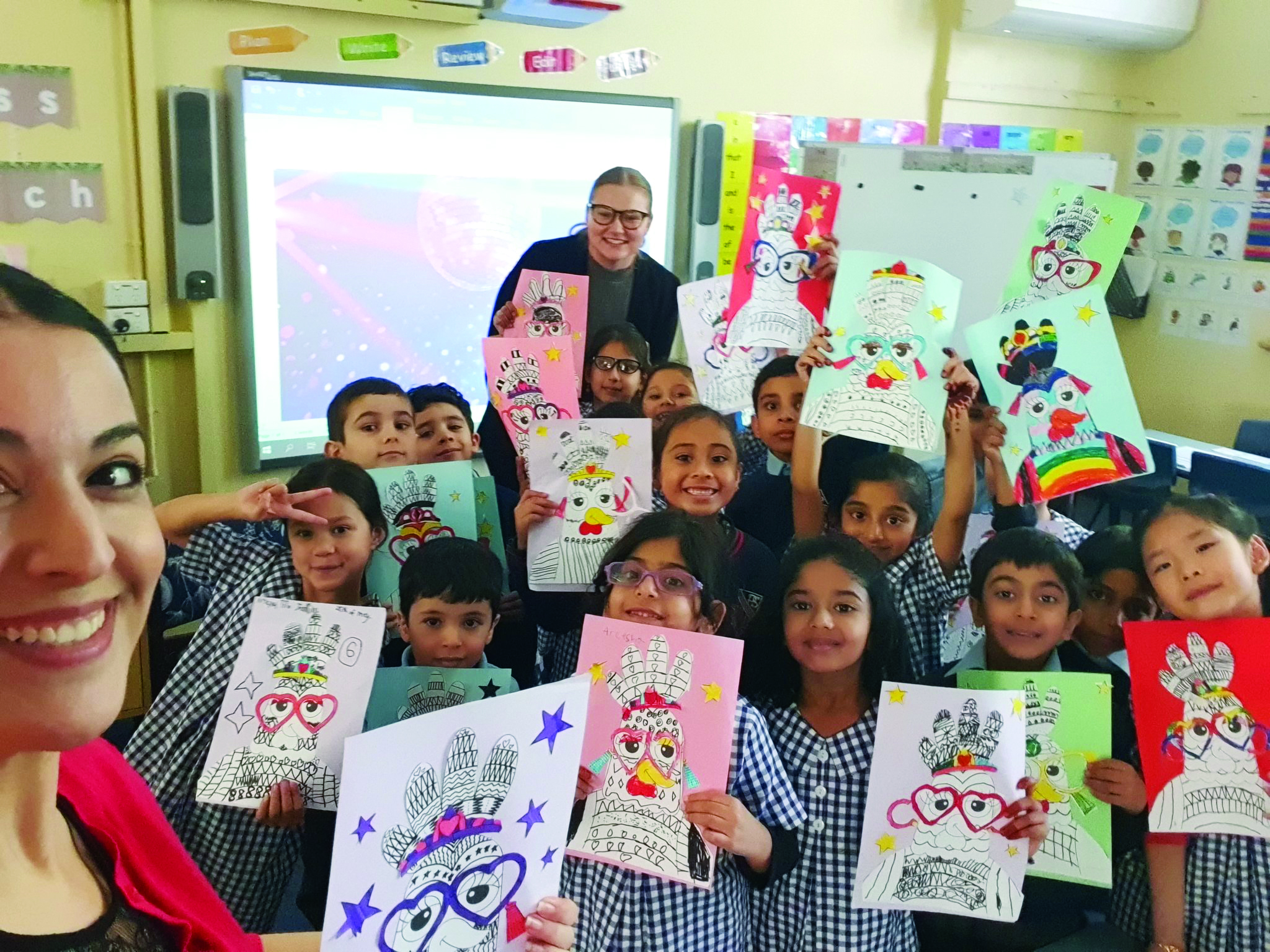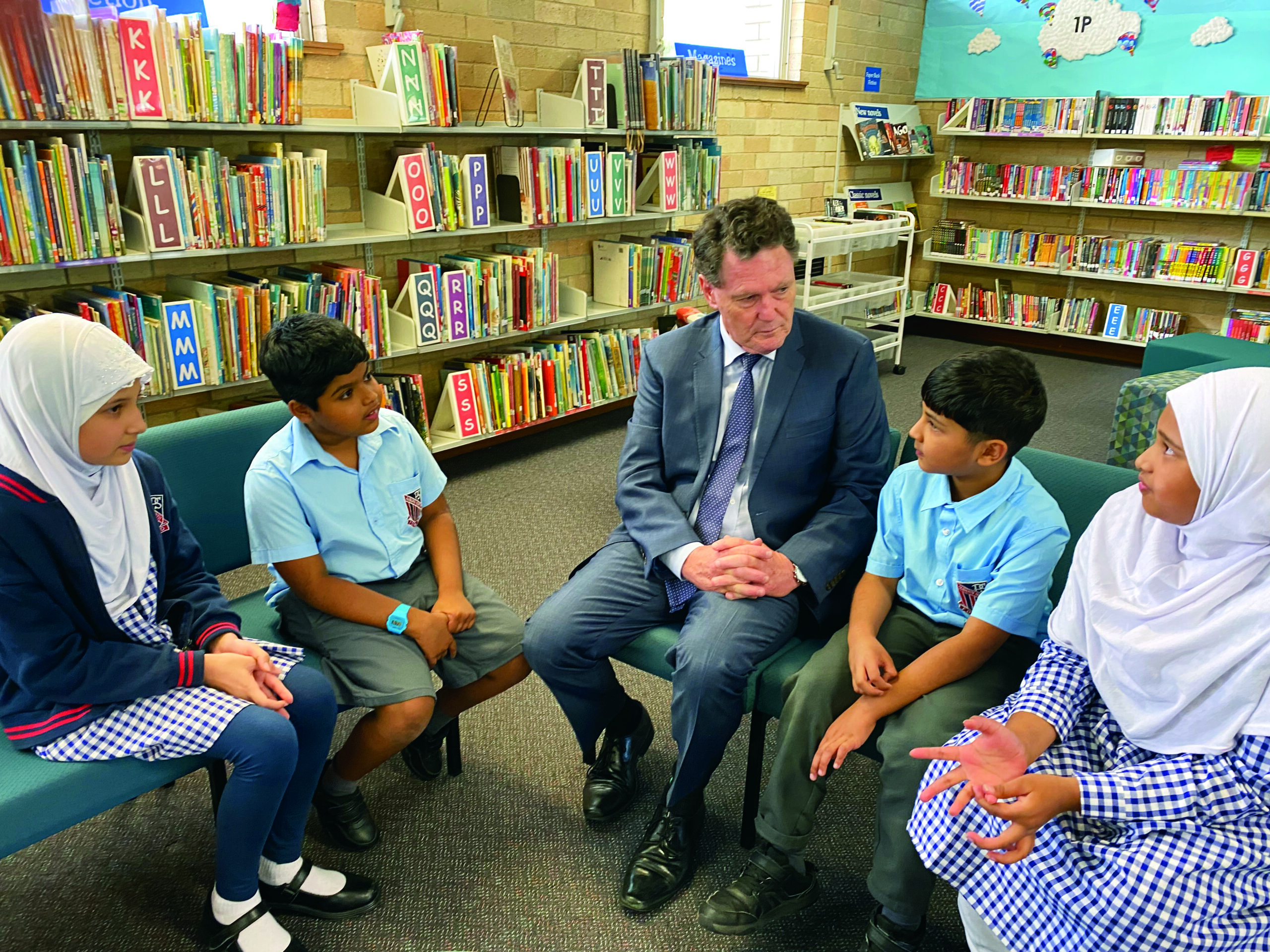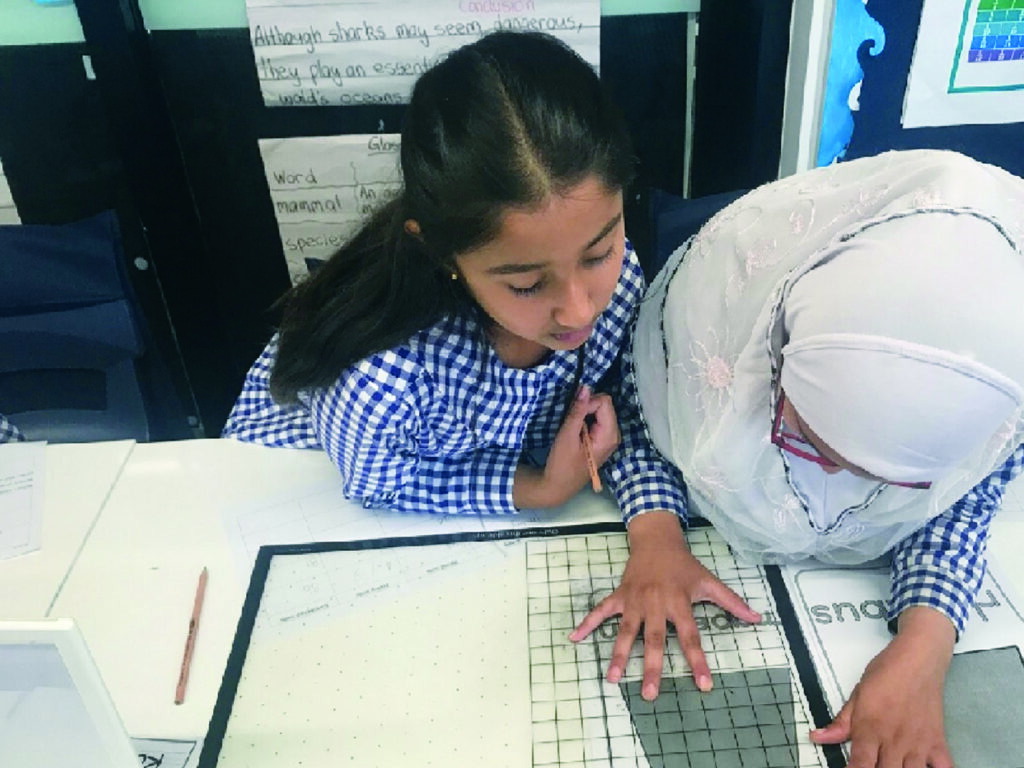
While we have developed and implemented programs and practices to assist all students develop outstanding literacy and numeracy, technology, and 21st century skills, the main reason we were selected as an ambassador school was because our students develop outstanding literacy and numeracy skills and achieve outstanding literacy and numeracy outcomes.
Read the full article in our latest print issue, here.
The Ambassador Schools program is part of the NSW Department of Education’s School Success Model. This program recognises high-performing schools: our school will work with other ambassador schools as well three universities to identify and then share highly effective, high-impact practices that we have operating in our schools.
It’s expected that this will help generate a strong evidence base on the factors that drive high-performance in schools.
Over many years, we have focused on and allocated most of our resources to the four factors that research and other evidence show have greatest impact on student learning. Those four factors are the:
- Quality of the school’s leadership.
- Quality of the individual teacher.
- Level of collective teacher efficacy and its enabling conditions.
- Level of parent engagement.
Some of the interrelated programs, practices, and strategies we have successfully developed and implemented in these four areas include:
Distributed leadership
To maximise the positive impact of leadership on student learning, we have adopted a K-6 distributed leadership model, composed of seven executive members and seven grade leaders. All leaders participate in high-quality leadership development programs, with a focus on instructional leadership and change leadership.
More than 20 school leaders participated in a seven-month leadership development program, all members of the executive team participate in three-day coaching and mentoring workshops each semester with our two education consultants, grade leaders participate in a fortnightly leadership development program that is coordinated by our Deputy Principal, and the executive members meet weekly to further develop their instructional leadership knowledge and skills and to share information about their present projects and programs.

All assistant principals and instructional leaders are ‘off-class’, but ‘in-classes’. Each leader supervises a grade or stage, and they utilise a range of strategies to work shoulder-to-shoulder with their teachers. Strategies include lesson demonstrations, team-teaching, lesson observations, and the filming of discreet parts of lessons for shared analysis.
Process to select temporary teachers
We advertise all temporary vacancies and invite some applicants to school to teach for one day. We observe each teacher teach one lesson and during the observations we assess the quality of the teaching and the way in which the teachers engage students in their learning. We also look for teachers with whom students will want to spend 1000 hours a year, teachers who will develop trusting and mutually respectful relationships with students, staff, and parents, and teachers who will become excellent teachers within three years given the quality of training, coaching, and mentoring they will receive.
Most members of our leadership team and our permanent classroom teachers began their teaching careers at Auburn North as temporary teachers.

External school reviews
Over the past 15 years we have participated in six external school reviews. Each review had a specific focus such as leadership, teaching and learning, reading, and school culture and climate, and was in response to data and other evidence that showed those areas required further development.
The reviews were conducted by education consultants and involved lesson observations, program evaluations, data analysis, staff surveys, and focus group meetings with students, parents, teachers, and leaders.
The implementation of all sets of recommendations and our continuing work with our education consultants have significantly improved the quality of our leadership, teaching, learning, and parent engagement outcomes.
Orderly learning environment
We have cultivated a positive and orderly learning environment where teachers come to teach, and students come to learn. We have very few behaviour issues, with maximum time spent on teaching and learning.
Programs and strategies that have developed and maintained this environment include the consistent promotion of our six school values of ‘respect, responsibility, kindness, honesty, fairness and friendship’ within our school-based positive wellbeing programs such as our Gold Badge program.
Our values are promoted during our daily 10-minute whole school morning assemblies where values-based principal’s awards are presented to students. Prior to COVID, each assembly was attended by more than 120 parents.
Teachers have developed a repertoire of strategies to develop and maintain orderly learning environments within their classrooms and across our school by participating in professional learning workshops in areas such as classroom management, building and nurturing positive relationships, and establishing and maintaining efficient routines.

Instructional teaching model (IM)
In response to a recommendation from our 2015 review, we developed our school’s instructional teaching model (IM). It’s based on research, including John Hattie’s Visible Learning research.
This explicit teaching model, which is used in most literacy and numeracy lessons, features high-impact teaching strategies such as teacher clarity through student-friendly, syllabus-referenced learning goals and success criteria, scaffolding through modelled, guided, and independent instruction, questioning for a variety of purposes, differentiation, and feedback.
We also developed an accompanying graphic to serve as a visual representation of the model and a rubric that was designed as a tool to assist in the provision of feedback to teachers on each section of the IM.
Our executive team has prioritised professional learning in the IM during whole school workshops, grade-based lesson studies, and during one-on-one coaching and mentoring sessions to improve teacher capacity to plan and implement lessons using the IM.

‘Locked in literacy’ strategy
We utilise the ‘locked in literacy’ strategy during the first two hours of each school day. Release from face-to-face teaching does not occur during this time. Instead, all teachers, including specialist support teachers, are in classrooms to support student literacy learning.
Specialist support teachers participate in high-quality professional learning to ensure they develop the necessary knowledge and skills to assist students develop high-quality reading and writing outcomes.
This is also the time when our Year 1 – Year 3 and Year 4 – Year 6 New Arrivals program operates.
Videos for self-reflection and peer-reflection
Auburn North strategically uses videos for self-reflection and peer-reflection. This involves leaders reflecting on videos of themselves leading teacher professional development programs, workshops, and sessions, and teachers implementing lessons. Leaders and teachers also receive feedback from colleagues after they’ve watched the videos.
Filmed sessions include my data meetings with leaders, and leadership development workshops led by our Deputy Principal.

Supervisors are filmed teaching literacy and numeracy lessons and conducting one-on-one student reading and number formative and diagnostic assessments. These videos are used during grade-based teacher professional learning sessions and during coaching and mentoring sessions. Supervisors are also filmed leading data meetings.
Grade leaders are filmed leading collaborative planning sessions, grade professional learning workshops, and leading parent information sessions.
Teachers are filmed teaching reading, writing and maths skills using our school’s IM, and during our triad lesson study strategy where small groups of teachers film and observe each other with the focus being explicit teaching, differentiation, questioning, and feedback.
Integrated Plans, Targets, and Assessment
We utilise a whole-school, integrated approach to plan, implement, monitor, assess, and evaluate literacy and numeracy teaching and learning programs. Our K-6 scope and sequence plans, our K-6 targets, and our K-6 assessment schedule are important components of this approach.
We have developed K-6 scope and sequence plans in all subject areas and last year we developed a phonological awareness, phonics, and spelling scope and sequence to implement this year. Our school’s literacy and numeracy scopes and sequences ensure a well-ordered progression of literacy and numeracy learning for all students.
We have developed and use K-6 term and annual literacy and numeracy targets. These have evolved over time as the quality of teaching and learning has improved. The targets are effective in assisting teachers develop programs and lessons, and to assist grade teams set future directions.
Our K-6 assessment schedule is aligned to our literacy and numeracy targets and assists our leaders and teachers gather valid student learning information across all grades in the school at pivotal times each term.
During data meetings, supervisors assist individual teachers and teams of teachers further develop their capacity to use appropriate assessment tasks, and to analyse literacy and numeracy data to celebrate achievements and to develop future differentiated teaching and learning programs.

Collective teacher efficacy
We have used a range of programs, practices, and strategies to achieve a high level of collective teacher efficacy by ensuring its enabling conditions flourish at Auburn North.
We have created a range of opportunities for meaningful teacher collaboration, where teachers exchange ideas, methods, opinions, and resources, and we have used classroom observations and videos to enable teachers to develop a deep knowledge about each other’s work.
Our school has also enabled teachers to make vital contributions to the development of our school’s goals, and we have empowered teachers by facilitating opportunities for shared leadership and for teachers to have a real voice in important school decision making.

Parent engagement
We have utilised a range of programs and strategies to assist all parents develop the confidence, knowledge, and skills to become active participants in their children’s learning. Prior to COVID, one program had been our ‘Parents as Partners in Learning’ program.
This is a grade-based literacy and numeracy workshop program, consisting of approximately 18 workshops each year. They are connected to grade learning targets and during the workshops parents participate in learning activities that are the same as those in which their children participate.
Parents are provided with resources to use at home with their children and on our school’s website, parents can watch videos of Auburn North teachers and students using the teaching and learning strategies and resources.







